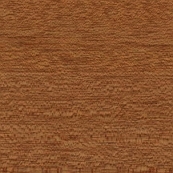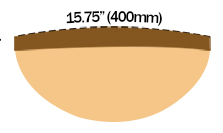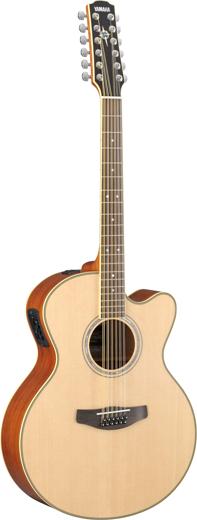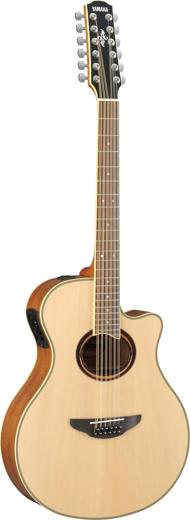Yamaha CPX700II-12 vs APX700II-12
Reasons to Get
Yamaha CPX700II-12 over APX700II-12
Reasons to Get
Yamaha APX700II-12 over CPX700II-12
Other Key Differences
Yamaha CPX700II-12 vs APX700II-12
Shared Features
Yamaha CPX700II-12 vs APX700II-12
Common Strengths
- Solid Top Wood
- Expensive Wood
Common Weaknesses
- Solid Side Wood
- Solid Back Wood
- Pickup Alter Switch/Knob
- Locking Tuners
- High-Quality Nut
- High-Quality Frets
- Compound Radius Fretboard
- From a High-Quality-Standards Country
- Luminescent Sidedots
- Strap Lock
- Top Pickup Brand
- 21:1 Tuner Ratio
- Active/Passive Preamp
Price History Comparison
These are affiliate links. We may earn a fee if you purchase after clicking. These prices are prone to error. Make sure you're buying the right product after clicking on a link from our site. We are not liable if you buy the wrong product after following these links. As an Amazon Associate site we earn from qualifying purchases.
Which One is Better for Beginners?
Both meet 5 out of our 8 criteria items for beginner friendliness. This takes into account the type of frets, scale length, nut width, bridge type, fretboard radius, and neck profile to determine the easiest combination for new players. If you're looking for your first guitar to learn how to play, you can't go wrong with either of them.
New Player Friendliness
Yamaha CPX700II-12- Comfortable shape
- Easy-to-use bridge
- Tall frets
- Narrow nut
- Comfortable neck
- Comfortable fretboard
- Short scale
- Soft Strings
- Locking tuners
New Player Friendliness
Yamaha APX700II-12- Comfortable shape
- Easy-to-use bridge
- Tall frets
- Narrow nut
- Comfortable neck
- Comfortable fretboard
- Short scale
- Soft Strings
- Locking tuners
Nevertheless, when it comes to choosing an instrument, you should pick the one more compatible with your personal style. Still, below we'll try you to give you our results as objectively as it's possible to help you decide.
Sound Quality Comparison
The most important thing that will determine the tone of an acoustic guitar is the wood. Let's take a look at the differences between both .
Woods Used in Both




Nato a hard and dense wood similar to Mahogany, but cheaper and not quite as hard. Tone-wise, it's also similar, but it doesn't have quite the same attack as Mahogany.
Rosewood is an almost purple-looking wood that is used mainly for fretboards since it's heavy, rare, and expensive. It's sometimes used on acoustic guitar bodies to create stronger warm tones. Find out more about Rosewood.
Spruce has a light color with tight grain patterns. It's very stiff but relatively light. It's known for producing a well-rounded tone with a broad dynamic range. Find out more about Spruce.
Okoume is an affordable wood and one of the first to replace Mahogany when the prohibitions started. It's generally softer than Mahogany and the tone has warmer lows.
Winner: Tie.
Electronics
Both come with electronics that allow you connect them to an amplifier or interface for recording.
Winner:Tie.
Final Sound Quality Scores
Build Quality Comparison
When it comes to build quality, we like to take into account everything used to build the instrument. This includes materials, hardware and the quality control expected depending on the country where it was built. Let's see how the Yamaha CPX700II-12 compares to the Yamaha APX700II-12.
Country of Origin
The manufacturing country can tell a lot about the build quality of an instrument. Both in this comparison where made in China.
China has a bad reputation when it comes to building quality. However, times have changed and now respectable brands use China's cheap labor to build good instruments for a lower price. Don't discount a guitar only because it was built in China, but also expect more quality from countries like Korea.
Winner: Tie
Nut Material
If you want your guitar to stay in tune and sound good, you need a well cut nut. Nut quality can be inconsistent even when comparing two copies of the same model. The best way to make sure you're nut will be well done is by getting a nut made by an expert company like TUSQ or Micarta.
In this case, both have Plastic nuts. This is a low-quality nut that you might want to consider upgrading soon. Bone and TUSQ nuts are the best for guitars with a fixed or simple tremolo bridge.
Fret Material
Most fret wire is made of nickel silver. This material eventually wears down after a lot of use and most instruments end up needing a complete fret replacement. However, some expensive models come with stainless steel frets. This is what you should aim for if you can afford it.
Unfortunately, none of them come with stainless steel frets.
Winner: Tie.
Tuners
Both come with regular tuners. Both come with Die-Cast Chrome (TMW28).
Winner: Tie.
Here is the list of features that were considered when choosing the winner in the Features subcategory:
Yamaha CPX700II-12
- Expensive Wood
- Electronics
- Solid Top Wood
- Cheap Fret Wire (NS)
- No Locking Tuners
- Made in China
- No High-Quality Nut
- No Top Brand Pickups
- Low-Quality Material Saddle
- Laminated Side Wood
- Laminated Back Wood
- No Compound Radius Fretboard
- No 21:1 Tuner Ratio
- No Strap Lock
Yamaha APX700II-12
- Expensive Wood
- Electronics
- Solid Top Wood
- Cheap Fret Wire (NS)
- No Locking Tuners
- Made in China
- No High-Quality Nut
- No Top Brand Pickups
- Low-Quality Material Saddle
- Laminated Side Wood
- Laminated Back Wood
- No Compound Radius Fretboard
- No 21:1 Tuner Ratio
- No Strap Lock
Final Build Quality Scores
Playability Comparison
Let's now compare their playability. Bear in mind that the instrument will feel different depending on your hand size and play style. That's why you should always test before buying. But if you can't or want a second opinion on it, we can still take a look at each of the important measurements of the instrument for you. This way, we can predict how easy a guitar might be to play, or how different it will feel compared to the other.
Remember that, even though the difference might seem small, every inch counts when it comes to feeling of the instrument in your hands. Any variation can completely change how comfortable a guitar feels in your hands.
Nut Width

The nut width will affect the separation between strings at the nut. In this comparison, both have a nut width of 46mm (1.811'').
This is considered a narrow width for a 12-string guitar. This means that this guitar will have a narrower string separation at the nut, which will affect your fretting hand.
If you are a player with big hands, you might find it difficult to play chords without muting strings. However, this is good for players who have smaller hands, as it will allow them to reach each string more easily at the nut.
Scale Length

The scale length is one of the things that influences playability the most. This is the distance between the nut and the bridge and will affect everything from low action allowance, difficulty to perform bends, fret separation, and even tone.
In this case, both have a scale length of 25".
This scale is close to a Les Paul (24.75''), but it's slightly longer for those who want more tension of the strings and a slightly brighter sound (but not as much as with a 25.5'' Stratocaster scale).
This longer scale will also mean the frets are slightly more separated, which can affect your speed when playing. However, since this increases the tension of the strings, it will also allow you to lower the action even further without getting fret buzz. It comes at the cost of making the strings feel stiffer, which makes bending more difficult, though.
However, remember that you can also change the tension of the strings by using different string gauges.
Lastly, remember that you can also affect the tension of the strings by changing your string gauge. You can use a thicker gauge for more tension and a lighter one for less tension.
Neck Profile

No single neck shape is better than others. However, most people tend to prefer a thinner necks because it doesn't get in their way when playing fast and most hand sizes can adapt to it pretty well. However, some people still prefer thicker necks for a better grip, especially if they have big hands.
Both the Yamaha CPX700II-12 and the Yamaha APX700II-12 have a C-shaped neck. This is what you'll find in most modern guitars. Most people feel like the thickness of a C neck is simply the less intrusive one for playing fast, while at the same time allowing you to grab the neck easily for resting if you want to.
Fretboard Radius

Most guitar fretboards are not flat; they usually have a curve or arc across their width. A curved fretboard will make it easier to perform chords without muting strings, while a flatter one will make it easier to play single notes, which is good for bending and soloing in general. The best fretboards have a compound radius that varies across the fingerboard, but they're not common since they take a lot more work to build.
Both the Yamaha CPX700II-12 and the Yamaha APX700II-12 have the same fretboard radius of 15.75". It's a radius that makes playing single notes (and bending, vibrato, sliding, etc) easier than on a classic Les Paul guitar. However, it's still more curved than some baritone and 7+ strings guitars.
Hand Size Comfortability
Everyone has a different hand size, and that's why it's recommended to try a guitar before buying, even if others tell you that it's comfortable to play. However, we can know whether a guitar favors small or large hands just by knowing its exact measurements.
After taking into account the scale length, nut width, neck profile and fretboard radius, we can conclude that both in this comparison favor small hands .
Yamaha CPX700II-12:
Yamaha APX700II-12:
Fret Size

Both have a Medium fret size. If you like feeling the fretboard when you play, but also appreciate some easiness to press down the frets, this size offers a good balance for that.
















